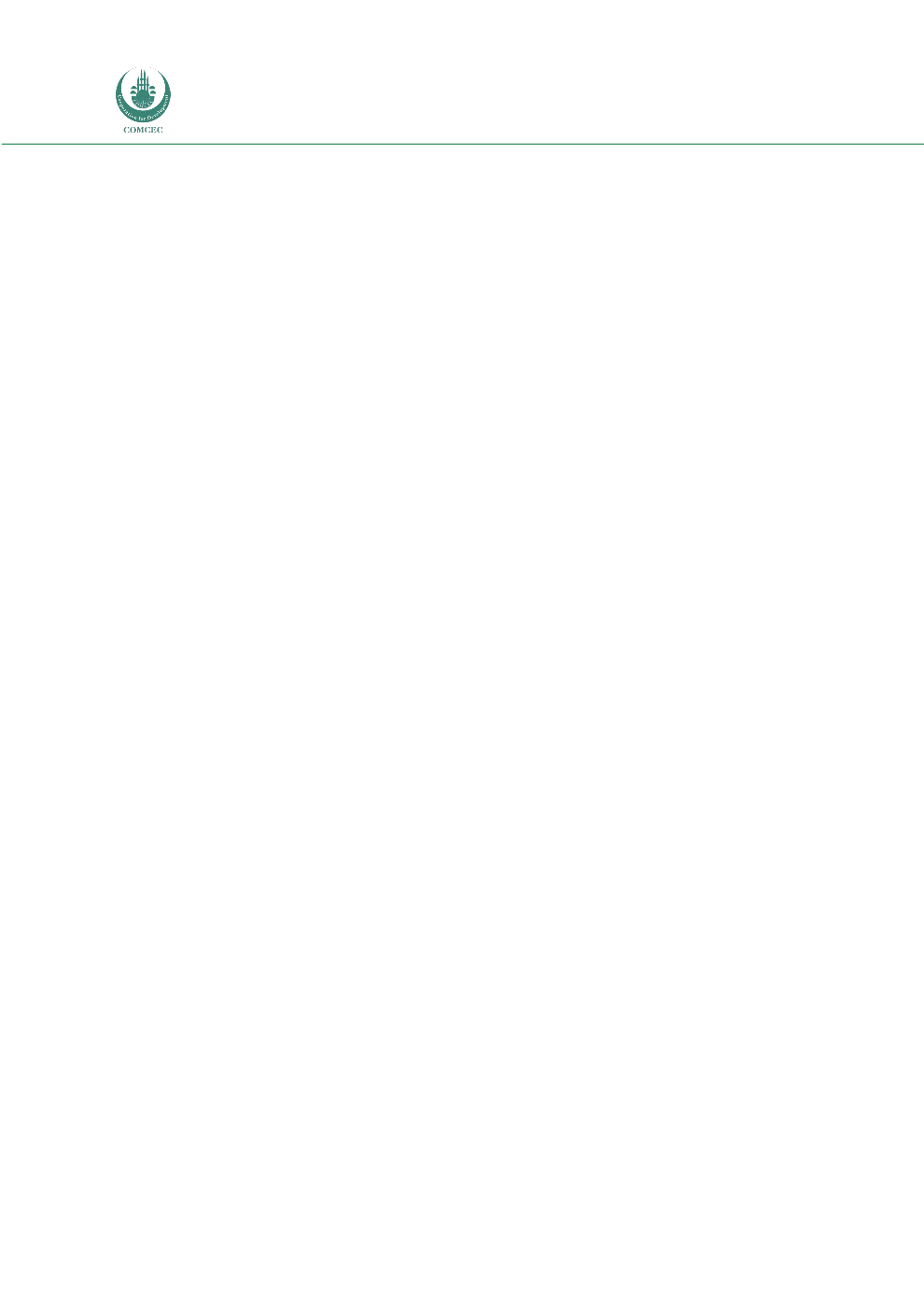

Risk Management in
Islamic Financial Instruments
128
Islamic financial markets across borders to improve efficiency and maximize returns, while
reducing transaction costs. Other recommendations include creating a Technical Assistance
and Linkages Network and regional working groups. A critical need for the IFSI is technical
assistance. The Technical Assistance and Linkage Network would be an international body that
would be composed of several types of institutions, including government, central banks and
private companies. The Network would provide recommendations to member countries and
help standardize regulations across all Islamic financial sectors. Other multilateral institutions
such as the IDB group and IFSB can play a similar role, as well. Regional institutions such as the
GCC and ASEAN can similarly help in the effort to harmonize. While regional bodies may result
in differing methodologies and understanding, they are easier to coordinate (
A Mid-Term
Review
122-124).
Cross-border harmonization will require the proper infrastructure to create the linkages
within and between countries. To determine the progress of linkage development, the several
identified KPIs include the number of initiatives countries take to link domestic IFSI with
regional and international financial markets, issuances of cross-border Islamic financial
instruments, and observer or delegate status for Islamic financial infrastructure bodies on
international regulatory bodies (
A Mid-Term Review
122-124). The AAOFI has been working
towards harmonizing Islamic accounting, auditing, and Shariah standards. The IIFM has
focused on harmonizing the Islamic financial markets while the IFSB is focused on prudential
regulatory standards. In an effort to achieve the goals set forth in the
Ten-Year Framework
, the
IILM was created in 2010, as a result of the collaboration between many bodies, including
central banks, monetary authorities, and multilateral organizations. The IILM’s focus is on
developing and implementing short-term Islamic financial instruments (
A Mid-Term Review
98).
6.5 GOVERNANCE AND CONTROL OF ISLAMIC FINANCE
There are three goals of Islamic Corporate Governance (CG), two of which are similar to
conventional CG and one unique to Islamic CG. Like conventional CG, Islamic CG includes
protecting stakeholder interests and achieving the company’s objective. Islamic CG includes a
third factor, which is to adhere to Shariah principles (ISRA 2). The Shariah governance system
is defined as “set of institutional and organizational arrangements through which IFIs ensure
that there is an effective independent oversight of Shariah compliance over the issuance of
relevant Shariah pronouncements, the dissemination of information and an internal Shariah
compliance review (IFSB, 2009, p. 2).” The first recommendation of the
Ten Year Framework
focuses on improving the Islamic financial sector by creating an enabling an environment with
more transparency and healthy competition. The three KPIs identified are 1) progress on
World Bank governance metrics, 2) the percentage of member countries with free market
financial systems, and 3) the level of transparency in Islamic banks, compared to traditional
banks (
A Mid-Term Review
105).
Upholding proper Shariah compliance requires several
agents. They include a Shariah board, both internal and external Shariah review units, and an
internal Shariah compliance unit (ISRA 22).
The industry’s level of Shariah compliance, the effectiveness of corporate governance, and
transparency can be measured by three indicators. One is the number of member countries

















